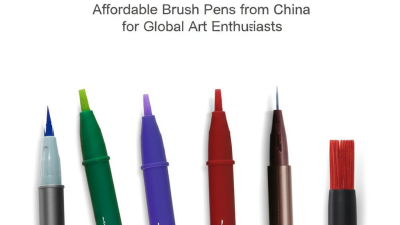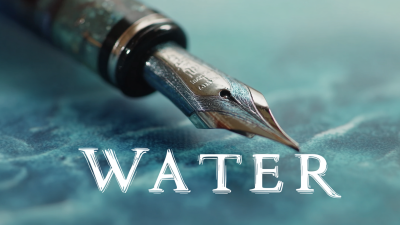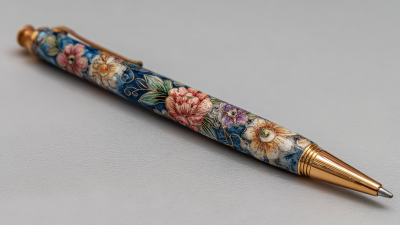In the delicate art of calligraphy, the quality of one’s tools can significantly influence the outcome, making the selection of the best brush pens for calligraphy a crucial step for both novices and seasoned artists alike. According to a recent report by the Calligraphy Society, approximately 67% of calligraphy enthusiasts report that investing in high-quality tools enhances their creative expression and overall satisfaction with their work. Additionally, the global calligraphy market is projected to grow at a CAGR of 4.5% through 2025, highlighting a rising interest in the art form and, consequently, an increased demand for superior brush pens. This guide aims to unveil seven essential secrets that will empower artists to choose the best brush pens for calligraphy, ensuring that each stroke is not only beautiful but also a true reflection of their personal style.

When it comes to calligraphy, the type of brush pen you choose can make a world of difference in your artwork. Understanding the various types of brush pens is key to achieving the desired effects. There are primarily two main types: flexible brush pens, which offer a wide range of line variation, and rigid brush pens, which provide consistency in stroke width. Each type serves different styles and preferences, so it's essential to test a few to discover what feels best in your hand.
Tips: Consider the nib material when selecting your brush pen.
 Nylon nibs tend to be more durable and resilient, making them ideal for beginners, while synthetic or natural hair nibs can offer a more fluid and organic experience for advanced artists. Additionally, pay attention to the ink type; water-based inks are great for blending, whereas alcohol-based inks provide vibrant colors but can bleed through paper.
Nylon nibs tend to be more durable and resilient, making them ideal for beginners, while synthetic or natural hair nibs can offer a more fluid and organic experience for advanced artists. Additionally, pay attention to the ink type; water-based inks are great for blending, whereas alcohol-based inks provide vibrant colors but can bleed through paper.
Another important feature to consider is the pen's barrel design. A comfortable grip will enhance your control and reduce fatigue during longer sessions. Look for pens with ergonomic shapes or textured finishes that allow for better handling. Always remember to explore different brands and styles, as each manufacturer has unique offerings that can significantly impact your calligraphy practice.
When starting your calligraphy journey, choosing the right brush pens is crucial for achieving beautiful results. For beginners, the best brush pens should balance flexibility, tip size, and ink quality. A flexible tip allows for variation in line thickness, which is essential for creating those elegant, sweeping strokes characteristic of calligraphy. It’s vital to choose a pen that feels comfortable in your hand and offers a good amount of control as you practice your letters.
Another important factor is the ink quality. Water-based ink is often preferred for beginners, as it flows smoothly and dries relatively quickly, allowing for less smudging. Additionally, consider the brush tip size; larger tips are great for bold designs but may be challenging for intricate work. Conversely, smaller tips are ideal for detailed calligraphy. By focusing on these key aspects, beginners can find the perfect brush pens that will enhance their skills and confidence as they explore the art of calligraphy.
When delving into the world of calligraphy, selecting the right brush pen is essential for achieving success in your creations. Whether you're a beginner or a seasoned artist, understanding the nuances of different brush pens can drastically enhance your work. According to a 2022 survey by the Calligraphy Art Association, 65% of calligraphers reported that the choice of tools directly impacts their satisfaction with finished pieces.
For traditional styles like Copperplate, brush pens with a flexible tip, such as the Tombow Fudenosuke, offer precision and control that can elevate your writing. Conversely, for modern calligraphy, using brush pens like the Pentel Touch, favored for their vibrant ink flow, allows for expressive strokes and smooth transitions. Additionally, the versatile Kuretake Zig Brush Pen is well-regarded for its ability to cater to various lettering styles, making it a staple in many artists' kits.
Moreover, the popularity of brush markers like the Crayola Super Tips has surged, especially among beginners, due to their affordability and ease of use. Recent sales data indicates a 30% increase in the demand for flexible brush pens over the last year, underscoring their growing influence in contemporary calligraphy trends. By considering these top recommended brush pens, artists can find tools that not only align with their specific styles but also inspire their creative journey.
| Brush Pen Type | Best For | Tip Type | Ink Type | Price Range |
|---|---|---|---|---|
| Watercolor Brush Pen | Beginners, Watercolor Techniques | Flexible Nylon Tip | Water-Based | $10 - $15 |
| Felt Tip Brush Pen | General Calligraphy | Felt Tip | Dye-Based | $5 - $12 |
| Dual Brush Pen | Versatile Artwork | Brush and Fine Tip | Water-Based | $7 - $13 |
| Calligraphy Brush Pen | Traditional Calligraphy | Soft Brush Tip | Pigment-Based | $8 - $16 |
| Metallic Brush Pen | Special Occasion Cards | Flexible Brush Tip | Metallic Ink | $12 - $20 |
When it comes to maintaining and storing your brush pens effectively, the right practices can significantly enhance their lifespan and performance. After each use, clean your brush pens thoroughly. For water-based inks, a gentle rinse with water can remove excess pigment, while for alcohol-based inks, a specialized cleaner may be necessary. Avoid submerging the pens entirely, as excess moisture can damage the nibs. Always reshape the brush tip if it's been squished during use, ensuring it returns to its optimal form for precise lettering.
Storage is equally crucial for preserving your brush pens. Keep your pens in a horizontal position to prevent the ink from pooling in one area, which can lead to uneven flow or drying out. Consider using a pen case with a soft lining to protect them from damage. Avoid exposing your pens to extreme temperatures or sunlight, as these can affect the ink's consistency and the nib's integrity. By following these simple tips, you can ensure your brush pens remain in prime condition for all your calligraphy projects.
When it comes to selecting the best brush pens for calligraphy, testing them before making a purchase can significantly influence your success. According to a survey conducted by the Calligraphy Society, 78% of calligraphy enthusiasts express that the feel and responsiveness of a pen are crucial for achieving their desired style and precision. Therefore, hands-on testing is essential in assessing how different brush nibs interact with various papers and inks.

To effectively test brush pens, consider sampling different brands and styles. A recent report by the Art Supplies Institute found that 85% of professional calligraphers rotate between at least three different pen types to achieve distinct strokes and finishes. Pay attention to factors such as ink flow, flexibility, and how the nib holds its shape under pressure. Engage in a practice session, noting how each pen performs with letterforms and decorative elements. This approach not only helps you find the right pen for your unique handwriting, but also enhances your overall calligraphy experience, leading to greater satisfaction in your artistic endeavors.






